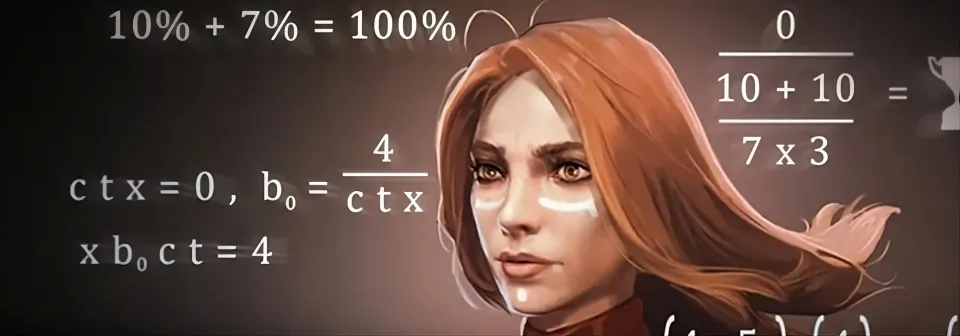- Smashuk
Guides
15:54, 08.10.2024

In Dota 2, efficient resource allocation is one of the most crucial aspects of the game, especially when it comes to the three core roles: Position 1 (carry), Position 2 (mid), and Position 3 (offlane). These roles define how a team distributes its farm and prioritizes its objectives, shaping the game’s overall strategy. As patches and meta evolve, understanding Dota 2 resource allocation tips becomes vital in staying ahead of the competition.
Historically, resource distribution trends have shifted based on new item changes, hero adjustments, and updates in mechanics. Recent patches have introduced new item builds and timings, changing the emphasis on certain heroes and strategies. As a result, players must constantly adapt to manage resources effectively between cores in Dota 2.
In this article, we have covered such key points as:

Understanding Core Roles and Their Resource Needs
Position 1 (Carry)
The Position 1, or carry, is responsible for dealing the most damage in the late game. These heroes rely heavily on items to scale and become powerful. As a result, Dota 2 core heroes farm priority leans toward Position 1 players, who often require secure lanes and jungle farm.
Resource Needs:
- High farm priority in the laning phase to acquire core items like Battle Fury, Manta Style, and Satanic.
- Requires safe lane protection to gather resources efficiently.
- Jungle optimization after leaving the lane to continue gaining gold and experience.
To maximize their impact, Position 1 heroes depend on the support heroes’ ability to zone enemy offlaners and protect them while farming.
Position 2 (Mid)
The mid hero serves as a hybrid between a damage-dealer and a tempo-setter. They balance farming and influencing early engagements. Efficient mid players know how to manage farm between cores in Dota 2, especially during the early and mid-game stages when map control is crucial.
Resource Needs:
- Key item timings to control the tempo (Blink Dagger, Black King Bar).
- Farm priority remains high, but not as much as the carry in the late game.
- Rune control and lane dominance are essential for mid heroes, especially when rotating for ganks or objectives.
Position 3 (Offlaner)
Offlane heroes focus on space creation and frontline engagements. Unlike carry and mid heroes, Dota 2 offlane farm strategy focuses on survival and initiation rather than outscaling the enemy in terms of raw damage.
Resource Needs:
- Defensive items like Vanguard, Pipe of Insight, and Blink Dagger.
- Lower farm priority compared to the carry and mid, but vital in the early game for teamfight impact.
- Balancing between aggression and farming efficiency is key to keeping the offlaner relevant as a frontline tank.

Resource Distribution in the Laning Phase
The laning phase is critical for setting the pace for resource distribution between cores. Let’s examine how each lane approaches Dota 2 safe lane farm strategy and farm distribution among its cores.
Safe Lane (Position 1)
For the carry, farm in the safe lane is the highest priority. Support heroes need to ensure that their Position 1 can secure as many last hits as possible by zoning the enemy and pulling neutral camps to reset the lane equilibrium. A good Dota 2 safe lane farm strategy involves pulling the neutral creeps and maintaining lane control, making sure that the enemy offlaner doesn’t get too much experience or gold.
Mid-Lane (Position 2)
The mid-lane is where Dota 2 mid game farm distribution begins. Heroes in this role must focus on both securing last hits and denying enemy farm while also positioning themselves for rune control every two minutes. Supports can help by controlling vision and ensuring the mid player has access to critical runes.
Offlane (Position 3)
The offlaner’s goal is to apply pressure while also farming effectively. Dota 2 offlane farm strategy involves utilizing creep pulls and neutral camps, ensuring the enemy carry’s farm is contested while also getting some gold and experience.

Core Resource Allocation by Lane:
Role | Farm Priority | Key Items | Farm Sources |
Carry (Pos 1) | High | Battle Fury, Satanic | Lane, Jungle |
Mid (Pos 2) | Medium | Blink, BKB, Eul's Scepter | Lane, Runes, Jungle |
Offlane (Pos 3) | Low | Vanguard, Blink | Lane, Neutral Camps |
Resource Allocation in the Mid-Game
As the game transitions to the mid-game, farm distribution between cores becomes more dynamic. This is where understanding how to allocate resources in Dota 2 becomes essential. Farm must be divided based on current item timings and map control.
Mid-Game Farm Distribution
A well-coordinated team knows how to move their carry to the jungle while giving the mid or offlaner more space to farm in the lanes. This balanced approach ensures that no core is starved for resources. Dota 2 core hero timings determine how teams should allocate farm at this stage, focusing on critical item pickups such as Black King Bar for the mid and Blink Dagger for the offlane.
Power Spikes and Map Control
Securing key objectives like Roshan or Tier 1 towers often depends on which core hero has hit their power spike. Utilizing map control effectively allows cores to farm aggressively while minimizing risk. Supports should focus on providing vision through wards to help Dota 2 map control and farm distribution.
Positional Play and Map Control in the Late Game
In the late game, resource allocation must be precise to prevent an over-commitment to one area of the map. Efficient Dota 2 core hero farm allocation involves spreading farm between all cores while keeping vision on key objectives.
Position 1 carries often dominate jungle camps and high-priority areas of the map, while Position 2 heroes rotate between pushing lanes and assisting in securing kills or objectives. Offlaners shift their role toward securing map control and vision rather than focusing purely on farm.

Late Game Farm Priorities:
Core Role | Priority Area | Objective |
Carry (Pos 1) | Jungle, High Ground | Farming key items |
Mid (Pos 2) | Lanes, Runes | Playmaking, ganking |
Offlane (Pos 3) | Objectives, Fights | Tanking, initiating |
Common Mistakes in Resource Allocation
Even experienced teams make mistakes when it comes to resource distribution. One common error is over-prioritizing farm for a single core hero, which can leave the team vulnerable in the mid-game. Dota 2 core hero farm allocation should always consider the needs of all cores.
Mistake 1: Focusing Too Much on One Core When too many resources are funneled into Position 1, the other cores may fall behind, leading to weak mid-game pressure.
Mistake 2: Poor Map Usage Failing to distribute heroes efficiently across the map can lead to inefficient farm. A lack of vision exacerbates this problem, as it can cause cores to hesitate in farming aggressively.

Conclusion
Efficient resource allocation between Position 1, 2, and 3 is key to success in Dota 2. Understanding how to distribute farm among your cores allows teams to gain a crucial advantage. Recognizing how to allocate resources in Dota 2 ensures that key item timings are met, objectives are secured, and your team scales well into the late game. By avoiding common mistakes and adapting to the game state, players can ensure their team remains competitive across all phases of the game.
Upcoming Top Matches
Latest top articles







Comments